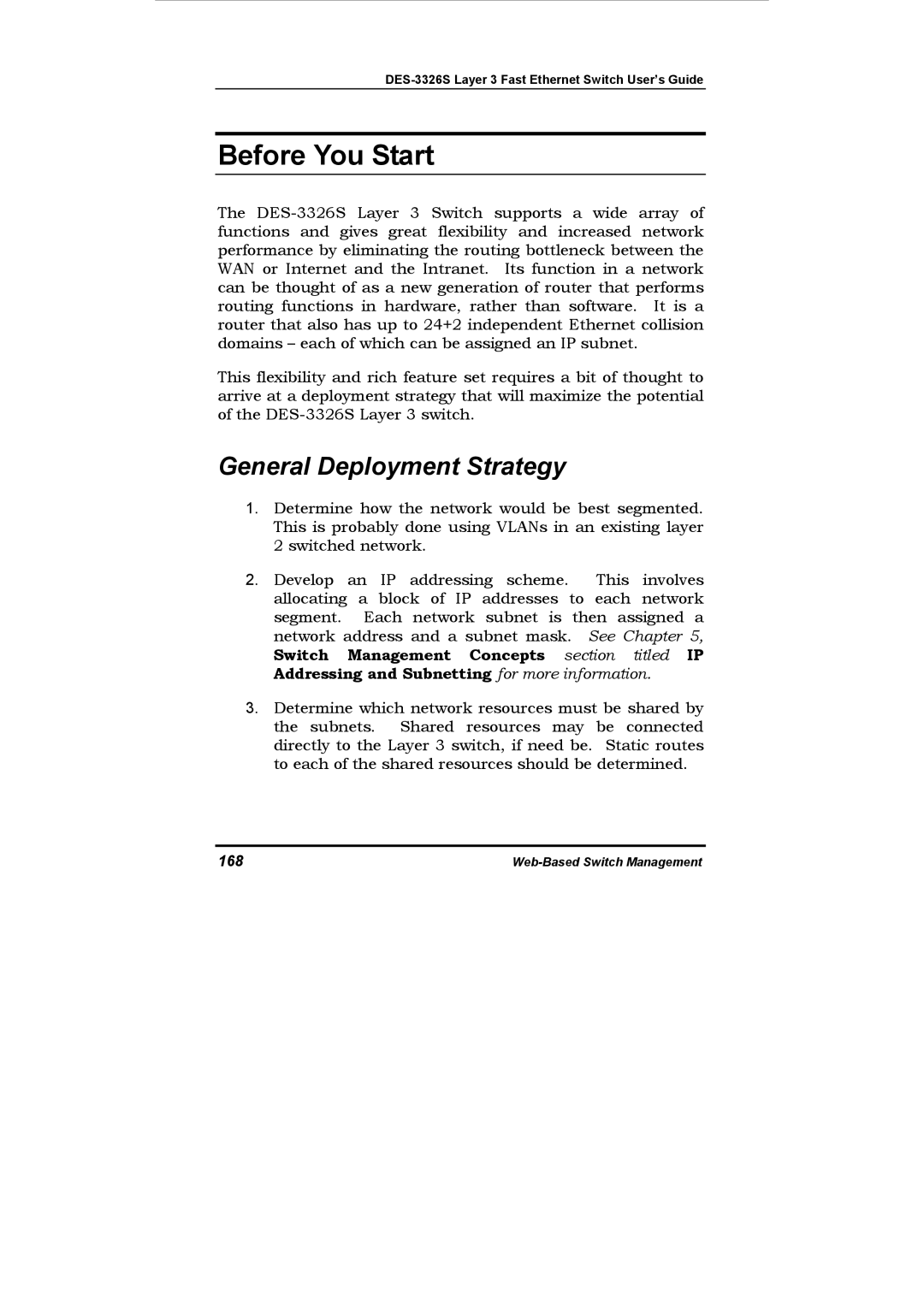
DES-3326S Layer 3 Fast Ethernet Switch User’s Guide
Before You Start
The
This flexibility and rich feature set requires a bit of thought to arrive at a deployment strategy that will maximize the potential of the
General Deployment Strategy
1.Determine how the network would be best segmented. This is probably done using VLANs in an existing layer 2 switched network.
2.Develop an IP addressing scheme. This involves allocating a block of IP addresses to each network segment. Each network subnet is then assigned a network address and a subnet mask. See Chapter 5, Switch Management Concepts section titled IP Addressing and Subnetting for more information.
3.Determine which network resources must be shared by the subnets. Shared resources may be connected directly to the Layer 3 switch, if need be. Static routes to each of the shared resources should be determined.
168 |
